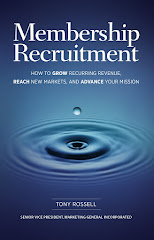Over the past couple of months, I have had the opportunity to look at ASAE and the Center’s Decision to Join with colleagues and clients.
There are a number of continuing questions that come up in discussions about association membership that this book helps to clarify. Here is my list of the issues where DTJ provides some help and confirmation to what I have also seen in the marketplace.
- DTJ says that those who are involved as volunteers in an association are much more enthusiastic about the value provided than are those who are not involved. “Those who are not involved lie perilously close to former members in their overarching assessments of the value they derive from associations. If former members are thought of as being dead, the uninvolved are close to comatose.” (Page 4) As you will note in my post yesterday (Growth through Membership Retention), this finding rings true with other data that I have seen and is an encouragement to get members involved as volunteers and customers with an association.
- DTJ says the “approximately half of them [lapsing members] indicate their reasons had more to do with career and other life changes than with the performance of the association. This means that those who worry about their retention rates get a 50 percent discount on their current distress levels.” (Page 3) In other words, no one will ever renew everyone and a plan is needed to add new members -- The Cost of the Wrong Membership Marketing Strategy.
- DTJ says not to worry about younger members. “A considerable body of evidence indicates that entry-level people have always been slow to appreciate the value that associations off until their career pursuits settle in as they reach their late 20s.” (Page 4) See my post and the debate related to this titled: The Ageless Question.
- DTJ says that in rank order the magazine or journal, conference or meetings, e-newsletter, or association web site is where current, former, or never members “prefer to receive information about your profession or field.” (Page 23) Members still want paper.
- DTJ says that the single biggest reason for dropping membership is that the member “did not receive the expected value to justify the cost of dues.” (Page 24) This finding emphasizes the need to provide excellent member benefits in order to keep members with the association -- Tangible Benefits Matter.
- DTJ says that the three most important personal benefits in your decision to join are: “a. Access to the most up to date information available in your field, b. Professional development or education program offerings, c. Opportunities for you to network with other professionals in your field.” (Page 82). This sounds like the classic information, professional development, and networking that we all include in our membership solicitations.
What did you find helpful in DTJ?







No comments:
Post a Comment